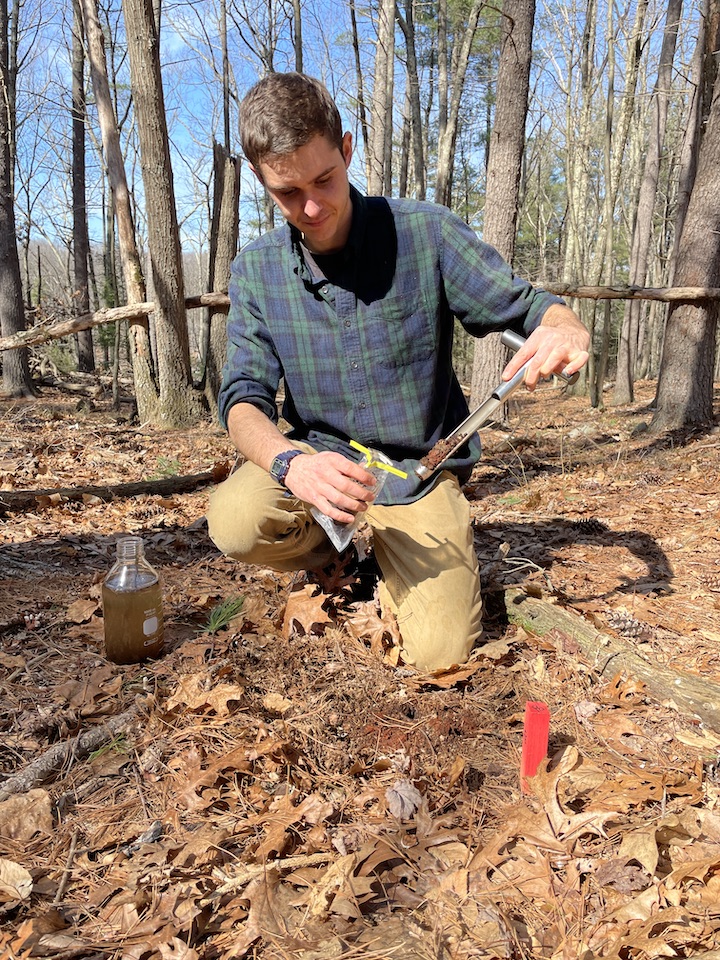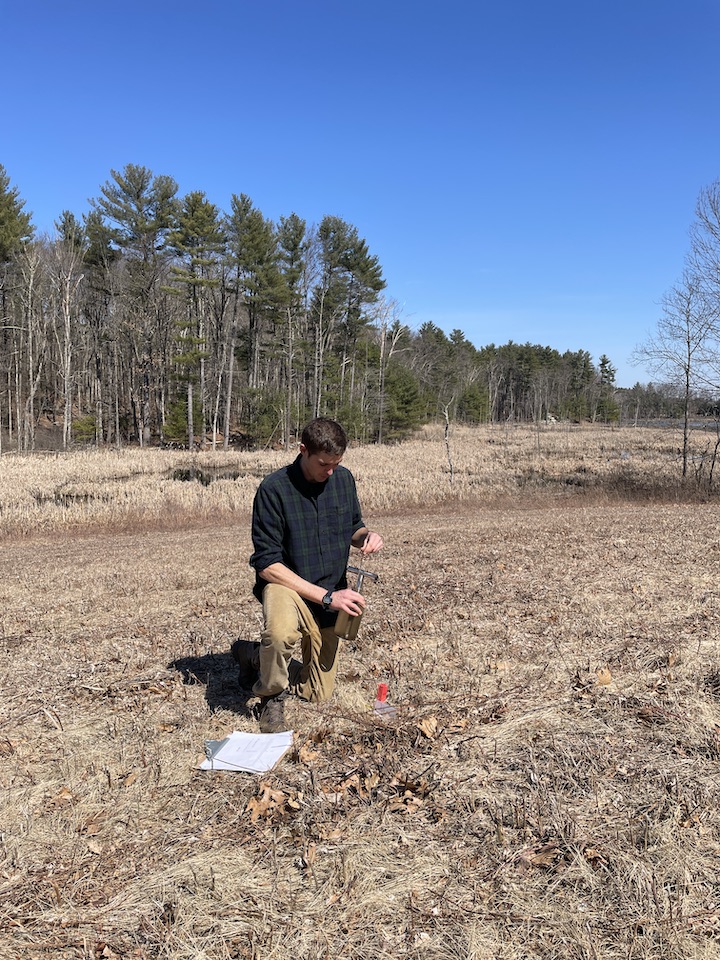Recent Posts
Blackman Field and Woods Participates in a Fungal Ecology Study

Tufts University PhD student Nicolas Louw is has been spending time in Groton at the Groton Conservation Trust’s Blackman Field and Woods. But it is not the hiking trails, the scenery or even the Forest Bells that brought him here.
Originally from Cape Town, South Africa, Louw is studying biology, specifically the diversity of Penicillium and Aspergillus. He is collecting samples from natural forests and open fields across Massachusetts. “I first became interested in the ecology of plants and the microbial pathogens killing plants,” he said. He received his Masters in plant biology from the University of Georgia before coming to Tufts.
He found Groton through his professor, Benjamin E. Wolfe, associate professor in biology at Tufts, and a neighbor of the Blackman Field and Woods. Louw will be monitoring the field work through September, 2024.
GCT Trustee Susan Hughes asked Louw about his work and his findings.
Q: Describe what you are looking at here in Groton.
Louw: After collecting my samples, I am processing these samples by plating the soil out on a medium (which is essentially food for the microbes) that specifically selects for Penicillium and Aspergillus. After growing out all the unique species of Penicillium and Aspergillus from their respective soil samples, I use a combination of DNA sequencing and morphological-based approaches to characterize all the unique species that I find. Once I have a collection of species, we can start to answer some exciting questions like: How many of these species are undescribed and what are they? Are there any patterns between where species grow and which genes or morphological chrematistics they have? Are some of these newly described species closely related to species commonly used to create medicinal compounds and fermented food products and do they also make the same or similar enzymes as these commonly used species?
Q: What do you hope to find?
Louw: I hope to find several species that are unknown! We are working with a collaborator in South Africa, professor Cobus Visagie, who can help us characterize these species. In addition, I hope that some species show signs of endemism (only growing at specific areas) whereas others will be more cosmopolitan. If that is the case, I am excited to explore which genes or morphological features a Penicillium has that is for example very common on the coast (Cape Cod and the North Shore) but not found in say the Berkshires. Likewise, I expect that species widely distributed across all sites will have a large overlap in morphological features like for example, the ability to make lots of spores — essentially like seeds in fungi.
Q: Why is this important?
Louw: More than just the blue fuzz on a rotten orange or piece of bread, Penicillium and Aspergillus are two of the most ubiquitous fungal genera that humans interact with daily. The mold from which antibiotics were first famously discovered by Alexander Fleming, belongs to a species of Penicillium, whereas some of the most devastingly threatening human pathogens belong to species in the Aspergillus genus. Penicillium is also used in the development of certain artisanal fermented food products like blue cheese, camembert, and salami.
Despite humans interacting with, relying on, and being at the mercy of these molds, we know surprisingly little about their ecology and evolutionary history. This work is important, because we are only scratching the surface of fungal diversity globally and by doing this work, it will contribute to unravel the species diversity of two economically and ecologically important fungal genera. In addition to learning more about the ecology of this particularly iconic group of molds, this research will also help us better understand why fungi in general grow in different environments.
For plants, we have a good understanding of why different species grow in different environments. For example, all plants in Mediterranean environments look similar globally, compared to desert succulents or temperate forest trees. We don’t yet have that sort of predictive understanding of why different fungi grow in different environments. One of the reasons why we don’t have that understanding, is because most fungi in nature are really hard to grow in the lab. Fortunately Penicillium and Aspergillus grow happily in the lab, which makes them ideal for such comparative biology studies.




